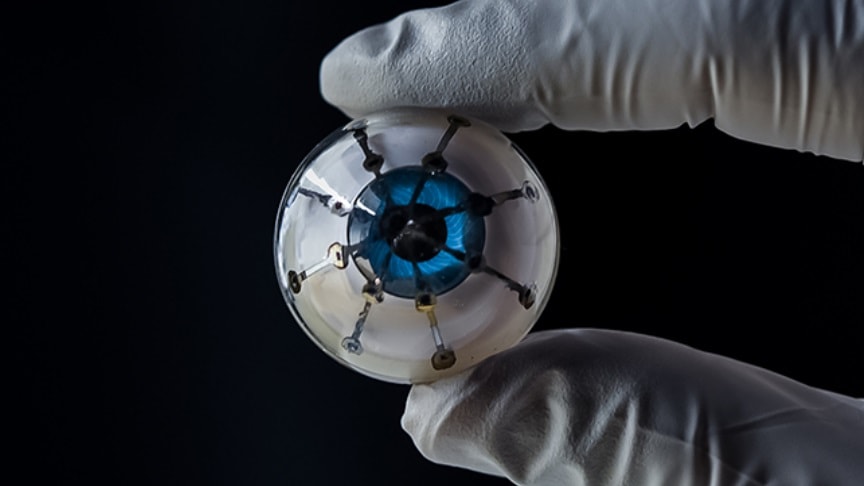A team of researchers at the University of Minnesota have, for the first time, fully 3D printed an array of light receptors on a hemispherical surface. This discovery marks a significant step toward creating a “bionic eye” that could someday help blind people see or sighted people see better.
source/Photo via UMN/McAlpine Group
Their work began with printing on a hemispherical glass dome — a challenging feat the team overcame with a custom-built 3D printer using a base ink of silver particles. This ink stayed in place and dried uniformly. Next, they used semiconducting polymer materials to print photodiodes. These convert light into electricity.
This video shows the 3D-printing process for directly and fully 3D printing an array of interconnected semiconducting photodiode (light receptor) devices on a glass hemisphere.Credit: University of Minnesota, McAlpine Group
Advertisement
When the research team tested the systems, it worked with nearly 25% efficiency and converted light signals into electrical signals.“Bionic eyes are usually thought of as science fiction, but now we are closer than ever using a multi-material 3D printer,” Michael McAlpine, co-author of the study and University of Minnesota associate professor, said in a statement.The next step is to create a more efficient prototype with additional light receptors; there is also talk of printing on a soft hemispherical material that can be implanted into a real eye.











